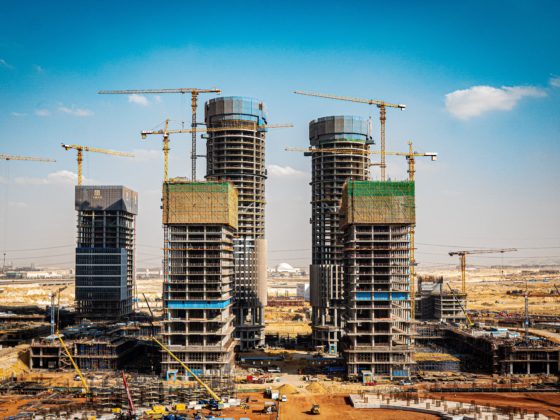The global shift to green is likely to accelerate in the post-COVID-19 world, but this is only symptomatic of a broader trend where Environmental, Social, and Governance (ESG) factors are becoming more critical to businesses’ long-term viability and value. The most direct and compelling way for businesses and investors to position themselves for the green transition, therefore, is to center ESG in their practices, operations, and policies.
On 29 April 2020, as countries scrambled to square up to the grim realities and prospects engendered by the COVID-19 pandemic, the managing director of the International Monetary Fund (IMF) issued bold guidance on how to rebuild the global economy. “We must do everything in our power to promote a ‘green recovery,’” Kristalina Georgieva urged, in a prepared speech for the Petersberg Climate Dialogue. Although some believe that climate efforts can be adjourned in light of the pandemic, “nothing is further from the truth,” she said.
Georgieva’s remarks came weeks after the IMF announced plans to deploy all USD 1 trillion of its lending capacity to support countries hit by the pandemic. In the midst of the most severe global economic slump since the Great Depression, at least 102 of the IMF’s 189 member nations have sought aid from the IMF to overcome the crisis.
Under the “green recovery” proposed by the IMF’s Fiscal Affairs Department, policymakers take the lead on rebuilding their economies in ways that make them more resilient and sustainable. The plan prioritizes diverting public funds away from carbon-intensive to green industries and technologies, promoting green finance through the issuance of green bonds and guarantees, increasing carbon taxes to accelerate the transition to cleaner fuels, and mandating climate disclosures by banks and large firms that receive public support.
To some, the IMF’s guidance is quixotic. Beyond its calls to “green the recovery,” the IMF has so far not imposed related obligations and conditions on its loans. Furthermore, if we can draw a lesson from history, some countries will likely be tempted to invest in carbon-intensive infrastructure projects as part of their post-crisis stimulus plans. The 2008 global financial crisis saw China pumping money into coal and fossil fuel projects. In Germany, after 2008, the topic of climate change became less important during parliamentary debates and remained sidelined for almost 10 years. In the first quarter of 2020 alone, China approved close to 10 gigawatts of new coal power projects, more than the amount approved for all of 2019.
Without compliance-driven requirements and enforcement, how much does it matter that the world’s most powerful international financial institution wants to lead and promote a green recovery? What kinds of post-crisis economic trends and stimulus measures should investors and businesses expect and implement?
“Dirty” Industries Will Stay for a While. So What?
It appears that “dirty” industries are here to stay, at least for a while.
Financial institutions and media outlets remind us that the current health crisis, in spite of its enormous social and economic costs, presents the global community with an opportunity to implement extensive, wholesale reforms that will make our businesses and investments more viable in the long run. The oil price collapse, for example, opens up a window for phasing out fossil fuel subsidies and facilitating the transition to a carbon-neutral economy.
But whether investors and businesses seize that opportunity remains to be seen. Even as more investors turn away from industries traditionally seen as “dirty” and lacking in long-term viability, some continue to prioritize the shorter-term financial returns in those sectors. Vietnam and Indonesia, for example, have secured USD 29 billion in funding for new coal power projects, with most of the investments coming from Asian financial institutions. Such funding will endure as long as major economies like China and Japan rely heavily on coal to meet their energy demand.
It may not seem realistic to expect “dirty” industries and practices to be rapidly eliminated because that requires deep structural transitions. However, it is even less realistic to conduct business as usual. Scientists and UN leaders warn that we face irreversible climate damage unless we overhaul our economic and corporate structures and stop relying on carbon-intensive energy systems. A climate crisis threatens to upend global supply chains, land and labor productivity, infrastructure, food security, and asset prices. The COVID-19 disruptions have already given us a snapshot of that prospect.
A compliance-driven approach to a green transition misses the point (and the opportunities) of that shift. Although “dirty” businesses still may bring short-run profits, investors who pour their money into corporations that have opaque supply chains and labor practices, poor governance standards, and weak crisis-management mechanisms, face the risks of more frequent and serious disruptions in a climate-uncertain environment.
Instead, investors stand to perform better by prioritizing longer-term value when considering how to rebuild their portfolios. In a recent survey, 200 of the world’s leading economists ranked green stimulus measures such as clean energy infrastructure and building retrofits among the top fiscal recovery policies deemed to create positive, long-term economic impact.
The Global Green Tide
The IMF’s “green recovery” proposal reflects mounting political will to effect lasting business and investment reforms globally. The pressure to shift to green is increasingly flowing from the public to the private sector. Europe has led the charge, pledging to achieve net-zero carbon emissions by 2050 and enacting its Action Plan on Financing Sustainable Growth.
The European Commission is developing the world’s first classification system for environmentally sustainable economic activities. The taxonomy, which explicitly excludes solid fossil fuels, aims to help financial firms assess a company’s climate risk exposure. The Commission also mandates that institutional investors and asset managers must, beginning in March 2021, disclose how they integrate Environmental, Social, and Governance-related (ESG) factors into their investment processes and decisions. All put together, these events mean that businesses’ ESG performance will increasingly be assessed accurately and easily, and that regulatory oversight is extending to private capital.
Such tailwinds are coming to Asia. Following the South Korean Democratic Party’s landslide victory in the mid-April parliamentary elections, the country is now implementing its Green New Deal, modeled after the EUR 1 trillion European Green Deal. South Korea is the first Asian nation to commit to a net-zero-emissions pledge by 2050. The plan includes a carbon tax, a pledge to end coal investments, and a focus on increasing investments in renewables.
ESG – the Framework to Navigate These Changes
The green stimulus packages of Europe and South Korea should provide the world with a useful roadmap for our post-COVID-19 recovery strategy. More broadly, we must recognize that the shift to green is only part of a wider trend where ESG factors are becoming centrally and materially critical to the long-term value and viability of businesses all around the world. That affects every single company – even those that engage in neither traditionally “dirty” nor “green” industries.
Even before the current health crisis, the costs of ignoring ESG factors to investors and businesses were intensifying. The pandemic has put a magnifying glass on the ESG vulnerabilities in industry practices and supply chains that, if earlier addressed, could have mitigated some of the disruptive and destructive impacts of the outbreak of COVID-19. In Singapore, for example, dormitories that house low-wage migrant construction workers in cramped living conditions have become the largest outbreak clusters in the country. As of 18 May 2020, dormitory residents form more than 91% of the 28,343 cases in Singapore. The strain on Singapore’s construction industry, wider economy, and healthcare system is significant – and so are the less tenable costs to the workers’ mental and physical health, and financial and employment security.
This is an example of a complex, multi-stakeholder ESG issue. Because of poor oversight in the global migrant labor supply chain, the average migrant construction worker must often work for close to two years to pay off the debt incurred when moving to Singapore from India, Bangladesh, or China. Worker indebtedness pushes migrant workers to keep silent about employer maltreatment and work long days for overtime pay, and possibly increases the risk of injury.
On the flipside, the opportunities associated with sustainable business practices are becoming more evident. In the COVID-19 world, companies with cybersecure, modernized internal systems have transitioned more smoothly to remote working arrangements. Among businesses with global supply chains, those that have digitized systems and diversified sourcing bases experience less severe disruptions.
The crux is that no two industries share the same set of key ESG considerations. For every company, identifying which ESG factors are material to its financial performance is critical to addressing key sustainability risks, thereby improving the resilience of its operations. Asset managers likewise need to employ a rigorous ESG framework that allows them to quickly and comprehensively identify the risk factors specific to their portfolio companies, across a range of industries.
The European Union’s ESG disclosure mandate signals that regulators are likely to increasingly employ ESG as the primary modality for ensuring compliance, and for keeping businesses and asset managers accountable, as they work to stave off the climate crisis. With pressure from leading global bodies like the IMF and the United Nations, our post-COVID-19 recovery is likely to be greener than before. To better position themselves for those shifts, and in recognition of our fundamental interdependence on each other as members of the global community, companies and investors can and should make ESG considerations core to their operations, investments, and mission.




